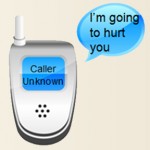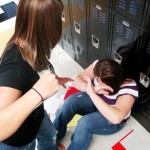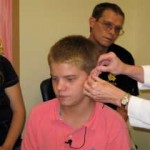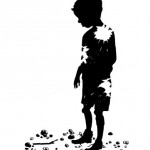By Riva Richmond
 TODAY’S bullies are not restricted to cafeterias, gym class and schoolyards. With technology, they can appear in every digital corner of a modern child’s life. But parents and children can take heart. Technology can also be harnessed to combat online bullies.
TODAY’S bullies are not restricted to cafeterias, gym class and schoolyards. With technology, they can appear in every digital corner of a modern child’s life. But parents and children can take heart. Technology can also be harnessed to combat online bullies.
“It’s being used to spread the pain, but the positive thing is it can be used to stop the pain,” said Hemanshu Nigam, founder of SSP Blue, a security and privacy advisory firm, and former chief security officer for the News Corporation’s online properties, including MySpace. Many tools can help you find and remove hurtful content, stop abusive contact and, increasingly, tackle wayward conduct, he said.
Here are tips on how to find those tools and learn how to use them.
MONITOR SOCIAL NETWORKS The most damaging bullying happens on social networks, because the attacks are public.
Bullies can leave cruel comments on profiles in Facebook, MySpace or Formspring, a nine-month-old question-and-answer service embraced by teenagers and used to level anonymous attacks. Bullies can post unflattering photos or videos and create fake profiles or online groups dedicated to bashing people they dislike. There have even been instances of bullies obtaining passwords to the accounts of their targets, hijacking profiles and posting scurrilous comments.
In 2008, a Florida eighth-grader who shared her MySpace password with a onetime friend discovered, after a falling out, that it was being used to post offensive sexual content. Three 14-year-old boys in Newburyport, Mass., were arrested this year after they created a fake Facebook page to harass a classmate. A Seattle middle school suspended 28 students for online bullying of a classmate this year.
The most popular social networking sites are prepared to handle trouble. All the sites let users remove comments from their own profiles, sever friend connections and block and report abuse. You can also restrict access to a profile using privacy settings.
“It’s a constant battle to make sure teens are safe,” said Joe Sullivan, Facebook’s chief security officer. When harassment appears, “we want to get it down quickly,” he said, and typically do it in less than 24 hours.
To report or take a bully off your friends list on Facebook, go to his or her profile and click “Report/Block this Person” or “Remove from Friends.” Blow the whistle on hateful content on group and fan pages by clicking “Report Page” and specifying the offense, which helps Facebook prioritize serious incidents. People in photos can dissociate themselves by clicking on the photo and on “remove tag” beside their name. If nudity or other Facebook violations are involved, report it and Facebook may take it down. Otherwise, you’ll have to ask whoever posted it to remove it.
On MySpace, you can block an abuser from the abused person’s profile page and report him or her by clicking “Contact MySpace” at the bottom of any page. MySpace also allows people to preapprove all comments made on their profiles. Go to settings, select “Spam” and then “Require approval before comments are posted.”
If you are staring down a mean comment or question on Formspring, don’t answer it, and it won’t be seen by anyone else. You can also block the author from contacting you again. To report harassment, click “Help” on any page and submit a complaint. Consider adjusting the privacy settings so only people you approve can follow you, and to block anonymous questions.
BLOCK MEAN MESSAGES Bullies also use e-mail and other message services to spread torment. Nasty messages can be forwarded many times to many people, and are nearly impossible to stop.
But like social sites, Web-based e-mail services popular with teenagers generally have codes of conduct that forbid harassment and intimidation, and mechanisms for reporting bad behavior.
In Hotmail, click “Options” at the top right of any page, navigate to “Blocked Senders” and add the e-mail addresses of bullies. In Gmail, set up a filter for offending addresses from the “More actions” drop-down menu and choose to automatically delete future messages (and perhaps also forward them to a parent).
Instant messages typically come from people only after a user has added them to a chat list, and abusers are usually easy to remove, block and report.
Blocking unwanted cellphone calls and text messages, however, requires visiting your carrier’s Web site, gaining access to the family account with a password and then supplying problem phone numbers. It cannot be done from the device itself. Verizon’s Usage Controls and AT&T’s Smart Limits for Wireless both cost $5 a month.
BECOME A HALL MONITOR There are several software programs and online services that can help parents detect and address bullying.
Parental-control software, which is installed on PCs your children use, comes in free and paid versions from a variety of companies and involves various levels of intrusiveness. Norton Online Family, a free service from the security software maker Symantec, for example, can monitor social network usage and oversee certain chat lists and I.M. conversations.
SafetyWeb and SocialShield are newer services that can also help monitor social network use. Both charge $10 a month. SafetyWeb finds online accounts tied to children’s e-mail addresses and monitors public online activity for signs of trouble — and semipublic activity if, for example, a child is friends with a parent on Facebook. The company is opposed to “spying,” said its co-founder, Geoffrey Arone, so it focuses on alerting parents to potential problems by watching for profanity and red-flag keywords.
SocialShield delves deeper into private social network content by having children add its Facebook, MySpace and Twitter applications. With this access, SocialShield monitors and distills what is happening for parents and alerts them to suspect content.
Several new services monitor text messages on smartphones, including Kid Phone Advocate from Parents Are Listening Services and CellSafety from WebSafety (both $10 a month). Both products watch for words and phrases that may be trouble.
CALL THE AUTHORITIES In serious situations, you may need help from your school or the police, especially if there are threats of violence. This means you will need evidence.
Demonstrate the problem with screenshots or saved copies of Web pages (choose “save as” in your Web browser) and copies of e-mail messages, instant messages and texts. Preserve it yourself, or use software like CyberBully Alert ($14.95 a year) to help you.
For court, it is best to have digital evidence directly from online services and the bully’s own computer, said Mark D. Rasch, who formerly prosecuted computer crimes in the United States Justice Department and is now a principal with the consulting firm Secure IT Experts.
Online services do not keep data forever and hard drives get wiped. The easiest and best way to preserve evidence is to enlist law enforcement. Otherwise, you will need a lawyer, a civil suit and subpoenas — and deep pockets.
“Don’t wait,” Mr. Rasch said. “If there’s any credible threat of injury or damage, you want to take this seriously and have it investigated.”
















